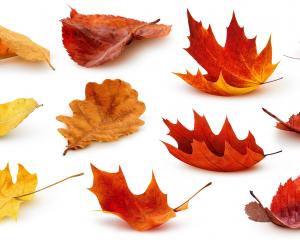Mussels have powered to the top of the sustainability charts, writes Tom McKinlay.
Green-lipped mussels never did turn out to be a miracle cure for cancer, despite breathless reporting on the likes of Holmes more than a decade ago.
But they might just provide the solution to sustainable management of New Zealand's marine resource.
Marine-farmed green-lipped mussels have topped this year's Forest and Bird Best Fish Guide, which was released this week.
It is the first time New Zealand's aquaculture farms have been assessed for the guide, which recommends which species are the best to eat from a sustainability point of view, and which are best avoided.
Forest and Bird marine conservation advocate Katrina Subedar says aquaculture species - which also include Pacific oysters, paua and both freshwater and marine-farmed salmon - fared well overall.
''We found almost all of the assessed aquaculture species are `good' or `OK' seafood choices''. The national assessment found some regional differences, so the guide takes that into account. For example, Pacific oysters farmed in the north of the South Island are ranked in the ''green'' zone, making them a good seafood choice, ahead of Pacific oysters from the north of the North Island, which are an ''OK'' choice. The northern ones lost marks for susceptibility to a herpes virus.
Wild fish species were not reassessed for the 2013 guide, so carry over their existing rankings from last year. But Ms Subedar says when they are reassessed next year, Forest and Bird will also look at regional differences for the first time, which may mean some wild fish turn out to be a more sustainable option in some areas than others.
''We want this to always be a resource that's based on good science and is peer reviewed,'' Ms Subedar says.
The guide assessment is based on the latest government and independent research, she says.
Among the few concerns around green-lipped mussel farming is the risk of whales and dolphins becoming entangled in the hanging lines of marine farms.
Farmed freshwater salmon from the Mackenzie Basin gets the green light, scoring points for the sustainability of the food used and its low impact on water quality.
Other factors taken into account when assessing the farmed species included management to prevent disease among densely stocked fish and effects on wild species.
Many of New Zealand's most familiar wild fish species languish in the red zone of the guide, indicating they are best avoided.
Snapper has one of the lowest rankings, a species poised for bag-limit cuts after stocks were found to be below target levels.
''We've seen with the recent calls to restrict snapper quota, what happens if we don't manage our fisheries sustainably,'' Ms Subedar says.
''Recreational fishers suffer, the industry's reputation suffers and the whole marine ecosystem is thrown out of balance. That applies to our aquaculture species as well as wild fisheries.''
However, she says stock levels are just one consideration for Forest and Bird, which takes an ecological approach, meaning issues such as bycatch come into the equation.
''One of the big things a lot of people don't actually realise with snapper, particularly out here in the Hauraki Gulf is that the snapper long-line fisheries also catch a large number of black petrels, which are a globally threatened seabird, literally on the brink of extinction.''
Southern favourite sole also languishes in the red section of the guide, together with other flatfish, despite good information on the species' robust breeding habits. It may well be that there is little risk of overfishing, but there is uncertainty about stock structure, no management plan and fishing methods used for flatfish - with bycatch and impacts on ocean floor ecology - mean points off, Ms Subedar says.
She says good information should come first, before large-scale extraction begins.
''We don't want to put the ecosystem out of balance, because we know that when we do this, and we know from examples overseas, systems can collapse.
''The absence of information is not an excuse to do something that is not sustainable.''
Gaps in information about fish stocks come back to money, she says.
''To do quantitative stock assessments you need money and you need resources to do it.
''We at Forest and Bird certainly believe that it's not acceptable - when we did our assessment in 2012 - that 56% of the 78 commercial fisheries we assess have never had a quantitative stock assessment and therefore stock status is unknown.''
New Zealand's quota management system does not have good enough information on which to base catch limits, she says. While it may have led the world 20 years ago as a fisheries management system, it is not leading the world now.
The better news is that Forest and Bird has no issues with recreational fishers heading out to try their luck.
''Hook and line is one of the best fishing methods you can use,'' Ms Subedar says.
''So, we encourage people, if you catch it yourself and obviously you stay within the size limits the ministry has in place, then eat it. That is always going to be a good choice.''
The guide
The Forest and Bird Best Fish Guide can be downloaded from the Forest and Bird website in hard-copy wallet-sized form, or as an Android or iPhone app. The website also has recipes by Annabel Langbein, Peta Mathias, Al Brown and others.












